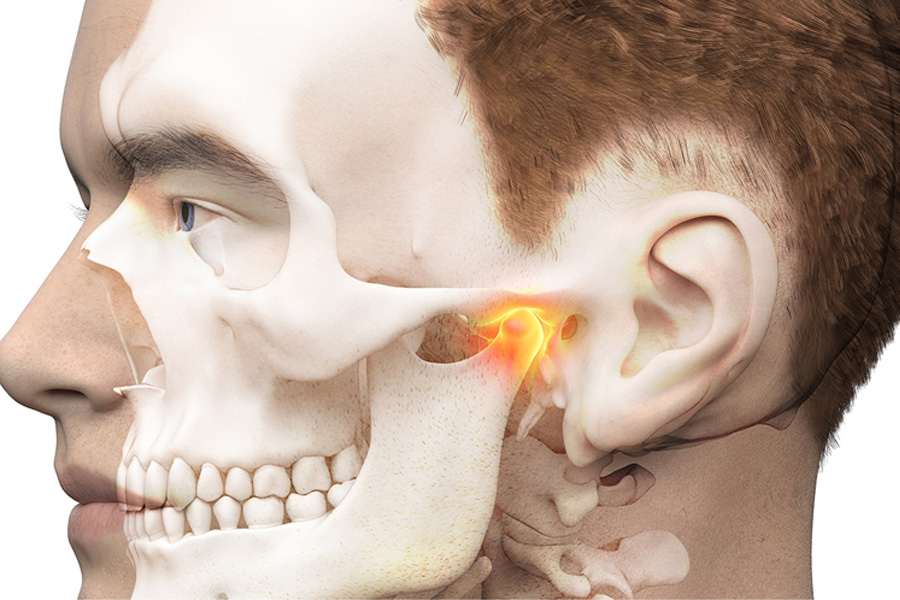The TMJ disorder affects millions of people every year. In addition to chronic jaw pain, it may cause headaches and ear trouble. While mild symptoms are often managed with home care and general dental treatments, in some cases, seeing an orthodontist is more than just recommended. These specialists have the skills and knowledge to diagnose TMJ problems and offer advanced treatment options.
Below, we’ll examine when to consult with a specialist. And how procedures such as arthrocentesis (arthroscopy), splint treatment, and minimally invasive surgery can play a part in treating TMJ dysfunction.
Comprehending TMJ Disorders
The temporomandibular joint connects the skull to the jawbone, acting as a hinge. Temporomandibular joint disorders are known as TMDs. These can be caused by injury, arthritis, and teeth grinding. The symptoms of TMD can range from clicking and popping sounds to jaw locking episodes.
Many cases are resolved by self-care. Physical therapy or short-term drugs. When pain worsens and interferes with sleeping, eating, or speaking, it is time to see a TMJ specialist.
When Conservative Measures Don’t Work
General dentists will often recommend conservative measures such as nightguards or soft diets. They may also prescribe anti-inflammatory medicines and stress management. But what happens if they don’t?
At this stage, patients often seek out TMJ Santa Monica doctors, notably oral and maxillofacial surgeons skilled in diagnosing and treating complex TMJ conditions. With their advanced surgical skills and imaging technology, these professionals can offer solutions well beyond the scope offered by general dentists.
Arthrocentesis, Flushing Out Joint Irritation
In mild cases with TMJ inflammation or restriction in movement, arthrocentesis might be recommended. Small needles are inserted in this minimally invasive procedure to remove dirt and inflammatory products from the joint. The procedure can reduce pain, improve movement of the joints, and provide rapid relief.
Arthrocentesis typically takes less than an hour. The recovery period is shorter, and complications are less common because there are no incisions. It’s a good first step in a more complex procedure.
Repositioning Splints For Relief
Splints are a key component of TMJ treatment. They’re often used alongside other treatments. Custom-made bite guards or oral splints are worn over the front teeth to relieve joint pressure and improve alignment. They are designed to reduce teeth grinding, release muscle tension, and let the TMJ rest and heal.
Splint therapy is effective in reducing symptoms when it’s done correctly. Oral and maxillofacial surgeons also use splints as diagnostic tools to determine joint mechanics.
The Minimally Invasive Arthroscopy: Precision In The Joint
When other treatment options don’t work, the next option is minimally invasive arthroscopy of the TMJ. As opposed to open joint surgeries that require large incisions for larger joints, arthroscopy uses small ports to insert tiny cameras and instruments. The surgeon can now directly see the joint space, repair soft tissues, or remove adhesions.
This technique has the advantage of being more precise and causing less trauma to the surrounding tissues. It also allows for faster recovery times when compared with open procedures. Arthroscopy can be particularly helpful for patients with mechanical joint problems, like disc displacement, which do not respond to conventional care.
The Signs You Need To See A Maxillofacial & Oral Surgeon
These are red flags that may indicate a need for specialized treatment if you have TMJ problems.
- Constant jaw pain lasting longer than three months
- Locking or limiting the opening of the jaw
- Frequent headaches, facial pain, and jaw movement
- Noisy popping sounds with each chew or yawn
- Failure to respond to medication or physical therapy
- An old jaw injury is causing symptoms today
These signs often indicate a joint issue that warrants an orthopedic surgeon’s evaluation.
The Role Of A TMJ Surgeon In Long-Term Relief
They are also vital in helping patients understand the range of treatment options available. From conservative to advanced surgical procedures, their holistic understanding of facial structure helps them create a tailored and targeted treatment plan.
If performed by a skilled specialist, procedures such as arthrocentesis (arthroscopy), splint therapy, and arthroscopy may dramatically improve the quality of life of chronic TMJ patients.
You should not delay seeking treatment if you have been experiencing discomfort for a long time and your conservative methods aren’t working. Consider consulting a TMJ Santa Monica dental and maxillofacial specialist. They can provide you with the latest treatment options to help bring lasting relief.


